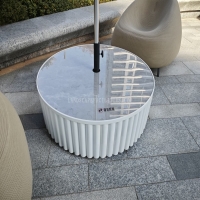Welcome to the website for landscape facilities products and knowledge.
How does the design prevent the accumulation of dirt in crevices?
Preventing dirt buildup in crevices is a critical aspect of modern design, especially in environments where hygiene and cleanliness are paramount. Engineers and designers employ several strategies to minimize dirt accumulation, ensuring surfaces remain easy to clean and maintain.
One key approach is the use of seamless or smooth surfaces that eliminate unnecessary gaps. By reducing the number of joints and edges, dirt has fewer places to settle. Materials with non-porous properties, such as stainless steel or specialized polymers, further resist grime penetration.
Another technique involves designing crevices with rounded edges or sloped angles, discouraging debris from lodging in tight spaces. This allows for effortless wiping or rinsing, as dirt cannot cling to sharp corners. Additionally, some products incorporate self-cleaning mechanisms, like hydrophobic coatings that repel liquids and particles.
For high-traffic areas, designers prioritize modular components that can be disassembled for deep cleaning. This ensures even hidden crevices are accessible, preventing long-term buildup. By combining these methods, modern design effectively tackles dirt accumulation, promoting durability and hygiene.
Ultimately, the goal is to create functional, low-maintenance surfaces that uphold cleanliness standards without compromising aesthetics or usability.
Related search:

Recommendation
Round metal tube border design table with tempered glass or granite countertop on the top.